The Middle East's once-inaccessible ancient wonder
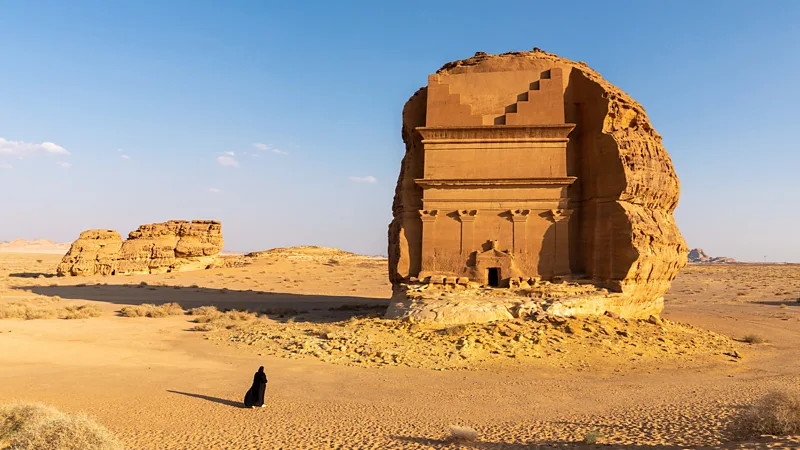 Nestled in a breathtaking valley, this ancient desert oasis has been the cradle of thriving civilizations for centuries. Closed off to outsiders for years, it is now gradually unveiling its hidden treasures.
Nestled in a breathtaking valley, this ancient desert oasis has been the cradle of thriving civilizations for centuries. Closed off to outsiders for years, it is now gradually unveiling its hidden treasures.
As a photographer, I've been captivated by the unique interplay of light in the desert, the way it stretches and reflects off the sand and rocks, casting an ethereal glow over the landscape. The stillness of these surroundings is something I find myself drawn to, yet equally fascinating is the resilience of humans in desert environments. In the Middle East, people have adapted and thrived in these harsh conditions for thousands of years, and nowhere is this resilience more evident than in AlUla.
Located in the AlUla Valley amidst the towering sandstone and granite mountains of north-western Saudi Arabia's Hijaz region, this ancient oasis has sustained human life for over two hundred millennia. Its fertile soil and access to water in the midst of the arid desert have nurtured numerous civilizations. From the Dadan and Lihyan kingdoms flourishing between 800 and 100 BCE to the Nabataean city of Hegra, AlUla's rich history spans centuries.
Only in 2019 did Saudi Arabia begin issuing tourist visas for non-religious travel, allowing foreign visitors to explore this long-hidden valley. Today, remnants of AlUla's enigmatic past are scattered throughout its numerous sites, with archaeologists gradually uncovering burial mounds, tombs, and rock inscriptions. As AlUla's secrets slowly come to light, it offers a glimpse into its ancient and mysterious heritage.
Rock-carved kingdoms and ancient messages
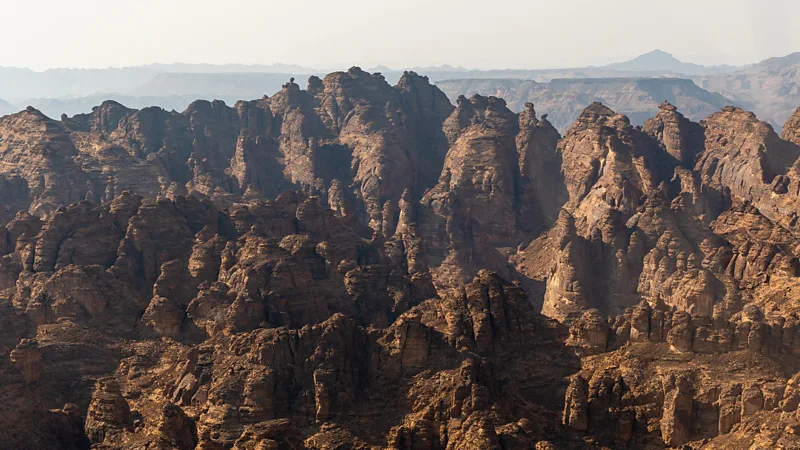 As early as 800 BCE, a stone-built city thrived in the AlUla Valley. Dadan, serving as the capital of the Dadan and later Lihyanite kingdoms, gained prominence as a key trading center for frankincense destined for Egypt, Mesopotamia, and the Mediterranean.
As early as 800 BCE, a stone-built city thrived in the AlUla Valley. Dadan, serving as the capital of the Dadan and later Lihyanite kingdoms, gained prominence as a key trading center for frankincense destined for Egypt, Mesopotamia, and the Mediterranean.
The Dadanites developed their own writing system, and today, these ancient inscriptions, some dating back over 2,500 years, are remarkably well-preserved at the nearby site of Jabal Ikmah, often referred to as "AlUla's open-air library." These inscriptions vary from simple graffiti to detailed records documenting offerings made to the gods.
The long-lost Nabataeans
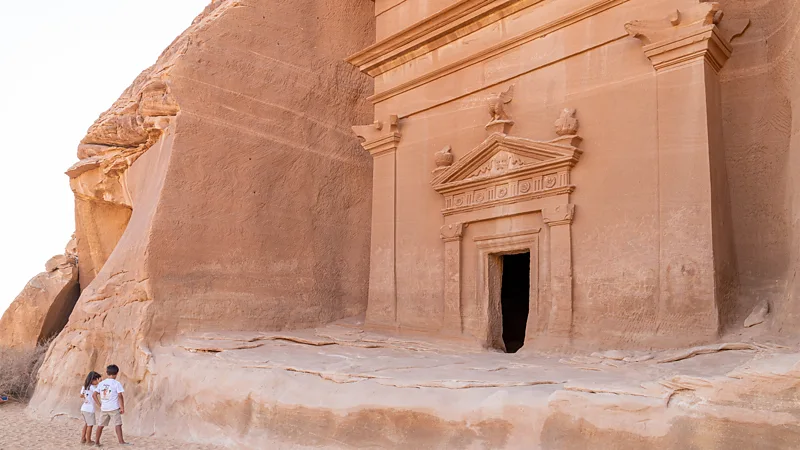 By the 1st Century BCE, the Nabataean civilization, originating from the southern Levant (modern-day Jordan), had expanded into north-west Arabia. While Petra remained the kingdom's capital, the Nabataeans established Hegra as their primary city in the region, now recognized as Saudi Arabia's first UNESCO World Heritage Site.
By the 1st Century BCE, the Nabataean civilization, originating from the southern Levant (modern-day Jordan), had expanded into north-west Arabia. While Petra remained the kingdom's capital, the Nabataeans established Hegra as their primary city in the region, now recognized as Saudi Arabia's first UNESCO World Heritage Site.
For about two centuries, skilled craftsmen worked within Hegra's necropolis, constructing grand monuments such as Qasr al-Farid, an exquisitely preserved tomb believed to have belonged to a prominent Nabataean figure based on inscriptions. Hegra's extensive archaeological complex spans 1.6 hectares and features 111 tombs that visitors to AlUla can explore today.
Among Hegra's notable tomb clusters is Jabal Al-Banat, housing 29 tombs associated with or dedicated to women. Another prominent site, Jabal Ahmar, contained the tomb of Hinat, a local woman of wealth who had a tomb constructed for herself and 80 descendants. Excavations at these sites unearthed human remains, textiles, and leather, providing valuable insights into Nabataean society. In 2023, a team of scientists completed a project reconstructing Hinat's face, now on display at the Hegra Visitor Center, welcoming visitors to explore this ancient heritage.
Old Town
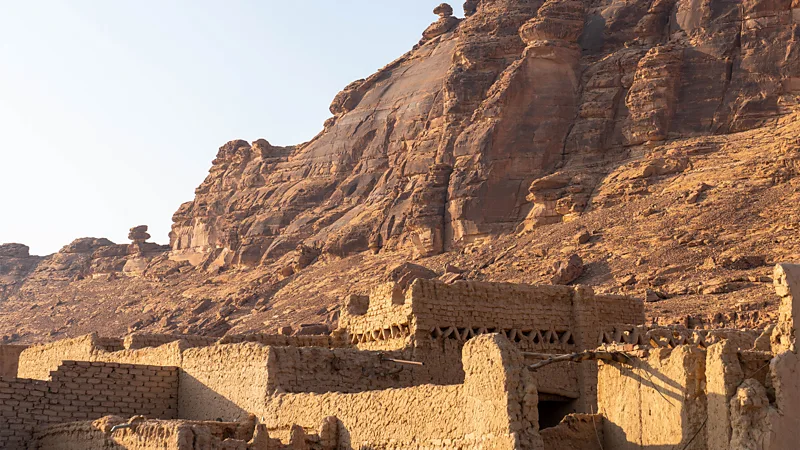 Following the disappearance of the Nabataeans, the AlUla Valley saw the emergence of several villages. However, it wasn't until the arrival of Islam in the 7th Century CE that the oasis regained significance, serving as a crucial stopover for pilgrims en route to the Islamic Holy City of Makkah.
Following the disappearance of the Nabataeans, the AlUla Valley saw the emergence of several villages. However, it wasn't until the arrival of Islam in the 7th Century CE that the oasis regained significance, serving as a crucial stopover for pilgrims en route to the Islamic Holy City of Makkah.
This led to the establishment of thriving settlements, with the most notable being Ad-Deerah, commonly referred to as "AlUla Old Town." Constructed around the 10th Century, this town utilized some of the same stones used by the Dadanites and Lihyanites a millennium earlier.
Characterized by tightly clustered mudbrick houses, markets, mosques, squares, and a defensive fort, AlUla Old Town remained inhabited for over 800 years until the 1980s. At that time, the government relocated residents to the nearby modern town of AlUla to preserve the original settlement as an open-air museum. Today, the Old Town stands as a labyrinth of abandoned homes, along with workshops for ceramics and embroidery, and shops offering artisanal crafts and dates from AlUla's surrounding groves.
AlUla's many secrets
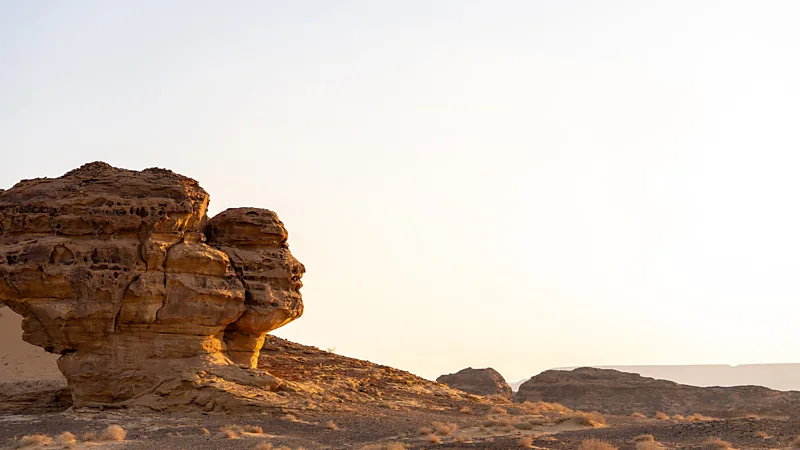 For centuries, Saudi Arabia, including parts of AlUla, remained inaccessible to outsiders due to historical beliefs that the area was cursed by Prophet Muhammad and considered haunted, even for Muslims within the country. However, in recent years, efforts have been made to explore and uncover the rich history of the region. In 2019, researchers initiated the first comprehensive archaeological survey of AlUla, leading to a series of remarkable discoveries that have reshaped our understanding of human history in the Arabian Peninsula.
For centuries, Saudi Arabia, including parts of AlUla, remained inaccessible to outsiders due to historical beliefs that the area was cursed by Prophet Muhammad and considered haunted, even for Muslims within the country. However, in recent years, efforts have been made to explore and uncover the rich history of the region. In 2019, researchers initiated the first comprehensive archaeological survey of AlUla, leading to a series of remarkable discoveries that have reshaped our understanding of human history in the Arabian Peninsula.
Among these findings, over 1,600 Neolithic stone monuments known as mustatils have been unearthed in the AlUla region, indicating human activity dating back some 7,000 years. Additionally, evidence of early dog domestication dating back to 4,000 BCE was uncovered in 2021, shedding light on ancient human-animal relationships in the area. Moreover, in 2023, archaeologists unearthed the world's largest prehistoric axe, a 51cm tool dating back 200,000 years, just south of the AlUla oasis.
Dr. Rebecca Foote, Director of Archaeology and Cultural Heritage Research for the Royal Commission for AlUla, emphasized the transformative nature of these archaeological findings, highlighting the dynamic nature of ancient settlements in the AlUla Valley, where people lived in various locations concurrently.
Ingenious desert engineering
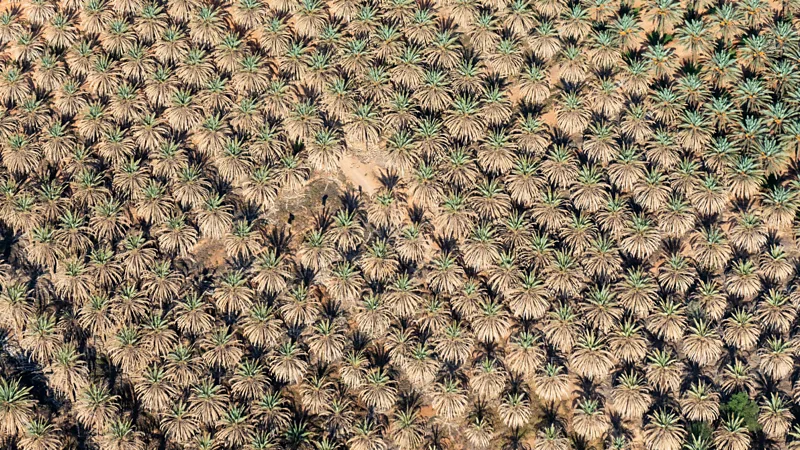 Ancient inhabitants of AlUla demonstrated advanced engineering techniques to thrive in the arid environment. Beginning with the Dadan kingdom, residents constructed extensive cisterns and wells to collect rainwater and tap into underground aquifers. By the early Islamic period, they developed a sophisticated irrigation system known as qanats, which utilized gravity and precise calculations of slope to transport water from the mountains to the fields. This effective water management enabled AlUla to flourish as an agricultural center, cultivating crops such as dates, citrus fruits, figs, wheat, and barley.
Ancient inhabitants of AlUla demonstrated advanced engineering techniques to thrive in the arid environment. Beginning with the Dadan kingdom, residents constructed extensive cisterns and wells to collect rainwater and tap into underground aquifers. By the early Islamic period, they developed a sophisticated irrigation system known as qanats, which utilized gravity and precise calculations of slope to transport water from the mountains to the fields. This effective water management enabled AlUla to flourish as an agricultural center, cultivating crops such as dates, citrus fruits, figs, wheat, and barley.
Today, the landscape is still dominated by native date palms, with approximately 2.3 million trees producing over 90,000 tonnes of dates annually.
A green oasis
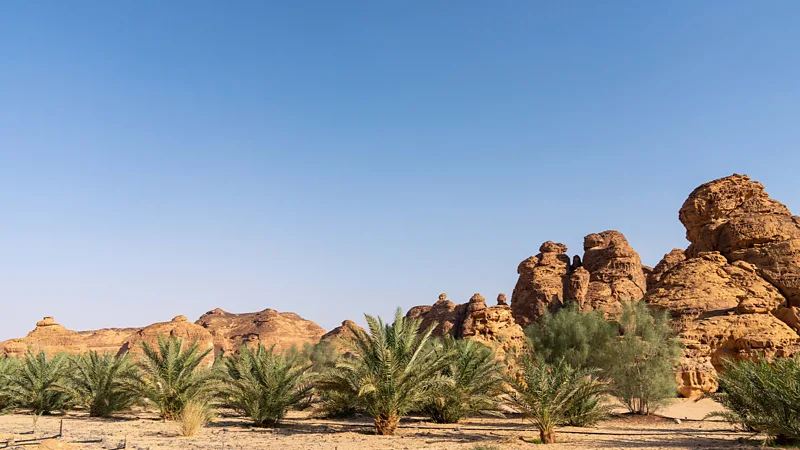 AlUla's date industry serves as the cornerstone for the region's broader agricultural output. Amidst the extensive date palm groves, citrus trees thrive, yielding oranges, lemons, grapefruits, and kumquats. Beneath the canopy of these trees, farmers cultivate herbs like mint and basil. Additionally, nearby cultivation of the Moringa peregrina tree, renowned for its cosmetic and medicinal properties, further diversifies agricultural activities.
AlUla's date industry serves as the cornerstone for the region's broader agricultural output. Amidst the extensive date palm groves, citrus trees thrive, yielding oranges, lemons, grapefruits, and kumquats. Beneath the canopy of these trees, farmers cultivate herbs like mint and basil. Additionally, nearby cultivation of the Moringa peregrina tree, renowned for its cosmetic and medicinal properties, further diversifies agricultural activities.
An annual event, the AlUla Citrus Festival held each January, unites local farmers, shoppers, and visitors during the harvest season. During this festive occasion, over 15,000 tonnes of citrus fruits are harvested and offered for sale, showcasing the abundance and richness of AlUla's agricultural harvest.
Natural wonders
 Apart from its captivating human history, the AlUla Valley boasts breathtaking natural landscapes, including desert canyons, sandstone cliffs, wind-sculpted rock formations, and volcanic terrain. Situated northeast of the AlUla oasis, the expansive 1,500 square kilometer Sharaan Nature Reserve is a sanctuary for various wildlife species, such as Nubian Ibex, gazelles, red-necked ostriches, and the elusive Arabian wolf.
Apart from its captivating human history, the AlUla Valley boasts breathtaking natural landscapes, including desert canyons, sandstone cliffs, wind-sculpted rock formations, and volcanic terrain. Situated northeast of the AlUla oasis, the expansive 1,500 square kilometer Sharaan Nature Reserve is a sanctuary for various wildlife species, such as Nubian Ibex, gazelles, red-necked ostriches, and the elusive Arabian wolf.
In the Ashar Valley, monumental ochre sandstone formations dominate the scenery, serving as the backdrop for AlUla's burgeoning hospitality sector. Amidst these impressive rock formations, numerous hotels, restaurants, and even a concert hall have been seamlessly integrated, offering visitors a unique and immersive experience amidst the rugged beauty of the landscape.
Surreal shapes
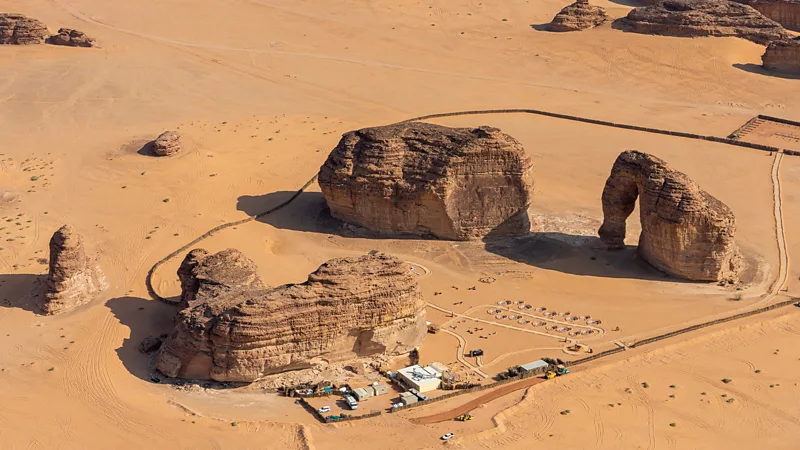 Jabal AlFil, also known as Elephant Rock, stands as one of the most iconic landmarks in AlUla. This majestic sandstone mountain, rising 52 meters high, has been sculpted into a striking resemblance of an elephant through millions of years of wind and water erosion. Observing Jabal AlFil from a helicopter ride above provided me with a profound sense of the immense scale of this valley, spanning over 22,000 square kilometers. It's easy to imagine how this oasis would have offered solace to weary travelers centuries ago.
Jabal AlFil, also known as Elephant Rock, stands as one of the most iconic landmarks in AlUla. This majestic sandstone mountain, rising 52 meters high, has been sculpted into a striking resemblance of an elephant through millions of years of wind and water erosion. Observing Jabal AlFil from a helicopter ride above provided me with a profound sense of the immense scale of this valley, spanning over 22,000 square kilometers. It's easy to imagine how this oasis would have offered solace to weary travelers centuries ago.
AlUla boasts numerous whimsically shaped natural formations scattered throughout its landscape. In Hegra, the Face Rock bids farewell to the setting sun, while the Sharaan Nature Reserve features the Dancing Rocks—two tower-like sandstone structures that appear to sway in harmony to an unheard melody.
Messages in the mountains
 The towering rocks and cliffs scattered across the AlUla region bear witness to over 50,000 messages from the past, ranging from Neolithic petroglyphs depicting hunting scenes to Nabataean tomb inscriptions cautioning against trespassing and theft. These ancient messages offer a fascinating glimpse into the extensive human history not only of AlUla but also of the broader region. According to Atif Albalawi, one of AlUla's official rāwī, or storytelling guides, "We have perhaps only uncovered 10% of the history in this valley. On nearly every cliff and mountain, you can find either ancient inscriptions or drawings that date back thousands of years."
The towering rocks and cliffs scattered across the AlUla region bear witness to over 50,000 messages from the past, ranging from Neolithic petroglyphs depicting hunting scenes to Nabataean tomb inscriptions cautioning against trespassing and theft. These ancient messages offer a fascinating glimpse into the extensive human history not only of AlUla but also of the broader region. According to Atif Albalawi, one of AlUla's official rāwī, or storytelling guides, "We have perhaps only uncovered 10% of the history in this valley. On nearly every cliff and mountain, you can find either ancient inscriptions or drawings that date back thousands of years."
In addition to the ancient rock art, contemporary artists also contribute to the landscape's artistic tapestry. Across AlUla, monumental installations seamlessly blend with the natural surroundings, transforming the region into a dynamic and immersive museum of human expression spanning across millennia.
Reflecting the past
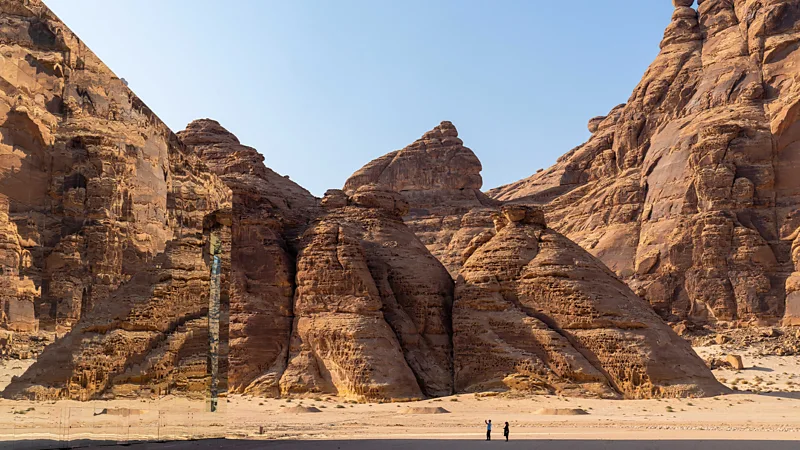 In 2019, a modern marvel emerged from the sands of AlUla's Ashar Valley. Known as Maraya, it stands as the largest mirrored building globally, adorned with 9,740 glass panels that mirror the majestic cliffs enveloping it. Serving as both an artistic endeavor and a venue for cultural events, concerts, and conferences, Maraya embodies the essence of AlUla—a timeless destination that continues to attract diverse individuals and ideas amidst its ancient landscape.
In 2019, a modern marvel emerged from the sands of AlUla's Ashar Valley. Known as Maraya, it stands as the largest mirrored building globally, adorned with 9,740 glass panels that mirror the majestic cliffs enveloping it. Serving as both an artistic endeavor and a venue for cultural events, concerts, and conferences, Maraya embodies the essence of AlUla—a timeless destination that continues to attract diverse individuals and ideas amidst its ancient landscape.














































